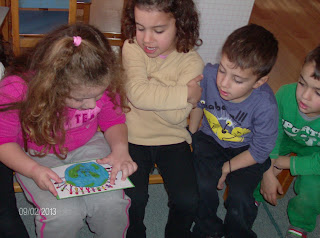Martenitsa is a small piece of adornment, made of white
and red yarn and worn from March 1 until around the end of March (or the first
time an individual sees a stork, swallow, or budding tree). The name of the
holiday is Baba Marta. "Baba" (баба) is the Bulgarian word for
"grandmother" and Mart (март) is the Bulgarian word for the
month of March. Baba Marta is a Bulgarian tradition related to welcoming
the upcoming spring. The month of March, according to Bulgarian folklore, marks
the beginning of springtime. Therefore, the first day of March is a traditional
holiday associated with sending off winter and welcoming spring.
Symbolism The red and white woven threads
symbolize the wish for good health. They are the heralds of the coming of
spring in Bulgaria and life in general. While white as a color symbolizes
purity, red is a symbol of life and passion, thus some ethnologists have proposed
that, in its very origins, the custom might have reminded people of the
constant cycle of life and death, the balance of good and evil, and of the
sorrow and happiness in human life.
Tradition On the first day of March and for a
few days afterwards, Bulgarians exchange and wear white and red tassels or
small dolls called "Пижо и Пенда" (Pizho
and Penda). In Bulgarian folklore the name Baba Marta (in
Bulgarian баба Марта meaning Grandma March) is related to a grumpy old
lady whose mood swings change very rapidly.
This is an
old pagan tradition that remains almost unchanged today. The common belief is
that by wearing the red and white colours of the martenitsa people ask Baba
Marta for mercy. They hope that it will make winter pass faster and bring
spring. Many people wear more than one martenitsa. They receive them as
presents from relatives, close friends and colleagues. Martenitsa is usually
worn pinned on the clothes, near the collar, or tied around the wrist. The
tradition calls for wearing the martenitsa until the person sees a stork or a blooming tree. The stork is
considered a harbinger of spring and as evidence that Baba Marta is in a good
mood and is about to retire.
The ritual of finally taking off the martenitsa may be
different in different parts of Bulgaria. Some people would tie their
martenitsa on a branch of a fruit tree, thus giving the tree health and luck,
which the person wearing the martenitsa has enjoyed himself while wearing it.
Others would put the martenitsa under a stone with the idea that the kind of
creature (usually an insect) closest to the token the next day will determine
the person's health for the rest of the year. If the creature is a larva or a worm, the coming year
will be healthy, and full of success. The same luck is associated with an ant, the difference being
that the person will have to work hard to reach success. If the creature near
the token is a spider,
then the person is in trouble and may not enjoy luck, health, or personal
success.
The martenitsa is also a stylized symbol of Mother Nature. During
early-spring/late-winter, nature seems full of hopes and expectations. The
white symbolizes the purity of the melting white snow and the red symbolizes the
setting of the sun which becomes more and more intense as spring progresses.
These two natural resources are the source of life. They are also associated
with the male and female beginnings.Wearing one or more martenitsi is a very popular Bulgarian tradition. The martenitsa symbolises new life, conception, fertility, and spring. The time during which it is worn is meant to be a joyful holiday commemorating health and long life. The colours of the martenitsa are interpreted as symbols of purity and life, as well as the need for harmony in Nature and in people's lives.
.JPG)
.JPG)
.JPG)
.JPG)


















